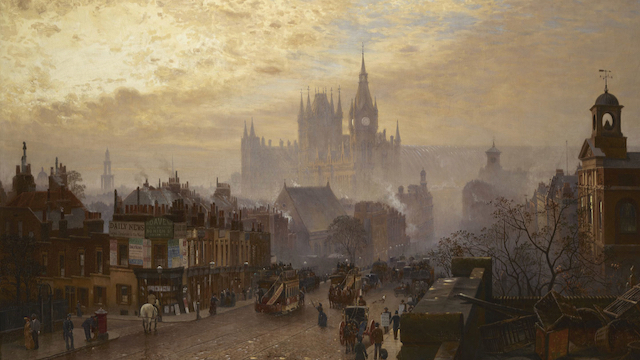Chips writes: We have no Canonical events of note in our calendar for this date. So, a couple of notes about Arsene Lupin, discussed in yesterday’s post. There is a story floating around about Sir Arthur Conan Doyle and Lupin the the Gentleman Thief. I have heard different versions of the story; maybe one of our audience can supply more information about the true facts.
The story is this: Sir Arthur was supposed to be a devoted billiards player. While playing at one parlor he was given a piece of chalk that was used to chalk up the tip of the billiard cue to allow the tip to hit the ball and not slide off it. The fellow that gave Sir Arthur the chalk said to keep it as a prize. Sir Arthur did and used it for some time. Then, one day, the chalk broke open, and inside the pieces was a note with the message “for SH from AL”. Any comments from our readers?
[Note from Selena: Doyle himself related this tale in Memories and Adventures:
Mr. Sherlock Holmes has always been a fair mark for practical jokers, and I have had numerous bogus cases of various degrees of ingenuity, marked cards, mysterious warnings, cypher messages, and other curious communications. It is astonishing the amount of trouble which some people will take with no object save a mystification. Upon one occasion, as I was entering the hall to take part in an amateur billiard competition, I was handed by the attendant a small packet which had been left for me. Upon opening it I found a piece of ordinary green chalk such as is used in billiards. I was amused by the incident, and I put the chalk into my waistcoat pocket and used it during the game. Afterward, I continued to use it until one day, some months later, as I rubbed the tip of my cue the face of the chalk crumbled in, and I found it was hollow. From the recess thus exposed I drew out a small slip of paper with the words “From Arsene Lupin to Sherlock Holmes.”
Imagine the state of mind of the joker who took such trouble to accomplish such a result.
And now back to Chips!]
 I received this volume from a fellow collector. He had decided he needed more shelf space, and so he gave it to me. It has two collections of stories inside the cover and shows quite a bit of wear. However, it is quite a nice volume with the feel of velvet on the front and back cover. The two volumes inside are Arsene Lupin— Gentleman Burglar, which ends with a story entitled “Sherlock Holmes arrives too late”, and The Extraordinary adventures of Arsene Lupin versus Herlock Sholmes. My collection seems to be two separate books that were taken apart and bound together inside one board cover. I assume that partly because of the separate spellings of the Holmes and Sholmes, the name change which occurred after the legal objections of Sir Arthur Conan Doyle, as mentioned yesterday.
I received this volume from a fellow collector. He had decided he needed more shelf space, and so he gave it to me. It has two collections of stories inside the cover and shows quite a bit of wear. However, it is quite a nice volume with the feel of velvet on the front and back cover. The two volumes inside are Arsene Lupin— Gentleman Burglar, which ends with a story entitled “Sherlock Holmes arrives too late”, and The Extraordinary adventures of Arsene Lupin versus Herlock Sholmes. My collection seems to be two separate books that were taken apart and bound together inside one board cover. I assume that partly because of the separate spellings of the Holmes and Sholmes, the name change which occurred after the legal objections of Sir Arthur Conan Doyle, as mentioned yesterday.
















 I am going to post a limerick here by the great Isaac Asimov. The limerick is about The Sign of Four, which I will be posting about in the next few days. That is not the total reason that I am posting.
I am going to post a limerick here by the great Isaac Asimov. The limerick is about The Sign of Four, which I will be posting about in the next few days. That is not the total reason that I am posting.







